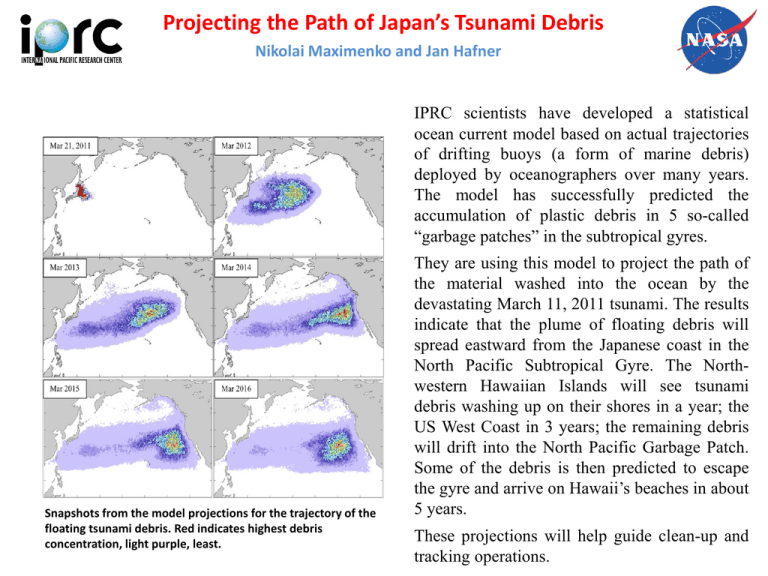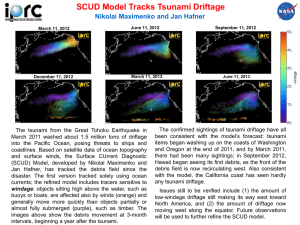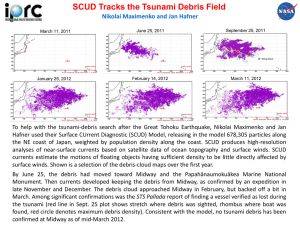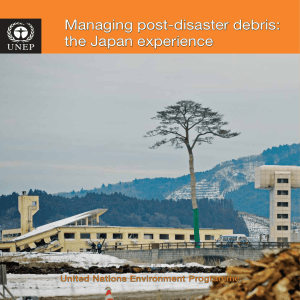Projecting the Path of Japan’s Tsunami Debris
advertisement

Projecting the Path of Japan’s Tsunami Debris Nikolai Maximenko and Jan Hafner IPRC scientists have developed a statistical ocean current model based on actual trajectories of drifting buoys (a form of marine debris) deployed by oceanographers over many years. The model has successfully predicted the accumulation of plastic debris in 5 so-called “garbage patches” in the subtropical gyres. Snapshots from the model projections for the trajectory of the floating tsunami debris. Red indicates highest debris concentration, light purple, least. They are using this model to project the path of the material washed into the ocean by the devastating March 11, 2011 tsunami. The results indicate that the plume of floating debris will spread eastward from the Japanese coast in the North Pacific Subtropical Gyre. The Northwestern Hawaiian Islands will see tsunami debris washing up on their shores in a year; the US West Coast in 3 years; the remaining debris will drift into the North Pacific Garbage Patch. Some of the debris is then predicted to escape the gyre and arrive on Hawaii’s beaches in about 5 years. These projections will help guide clean-up and tracking operations.






